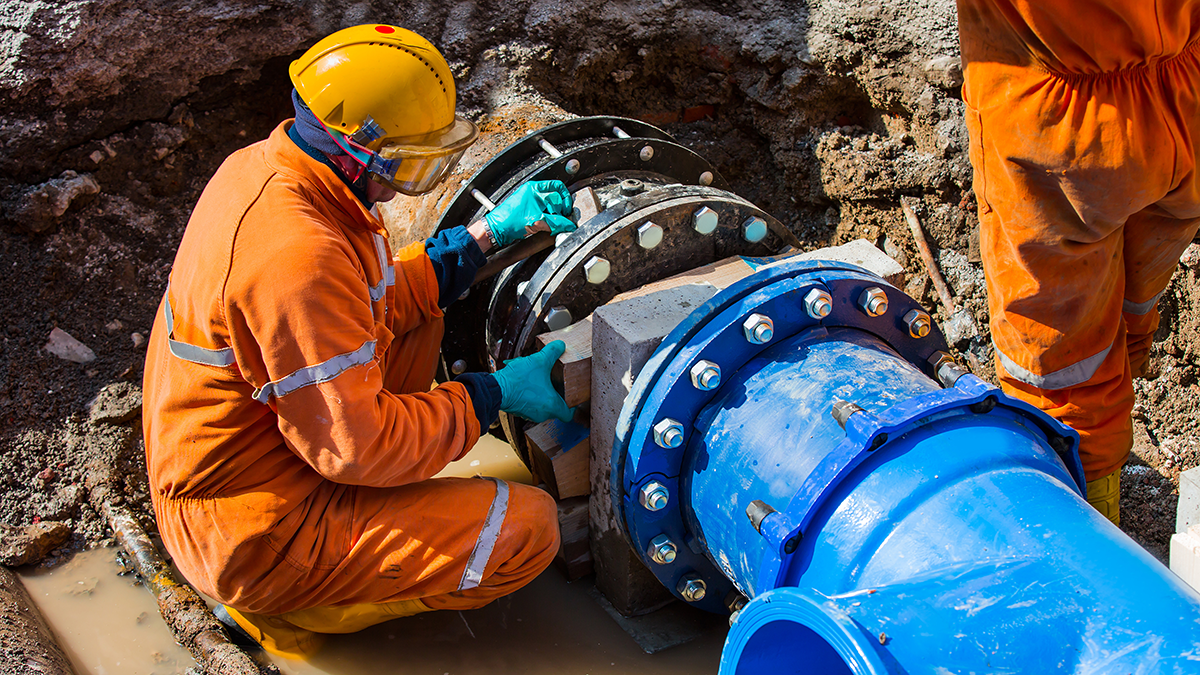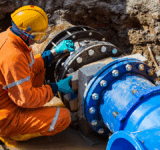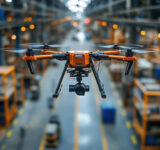Today’s pressures facing the water industry are probably of no surprise to the general public: a growing population coupled with a drier climate and less available water puts strain on the infrastructure. Anglian Water, whose operations span a large section of the East of England, know these pressures all too well. James Hargrave, Head of Leak Operations, sat down with IoT Insider to talk about how tech like sensors and satellites are vital tools.
Combating leaks is serious business: Anglian’s own leakage team is made up of approximately 250 people.
“To put it into perspective, Anglian, on average, loses about 180 million litres to leakage, which is just over 15% of what we put into the network on an average basis,” said Hargrave. This is exacerbated during hot weather when people naturally use more water, from consumers filling their paddling pools to soft drinks companies selling more bottles and needing water for their own production.
There are several techniques Anglian Water has in its repertoire to tackle leakage. One of which is demand modelling and forecast models which uses data – such as pipe failure rates, soil types and weather patterns – historical trends, and future outlooks to understand what areas have pipes with the potential to fail, and how it can prevent that.

It may sound grim, but this kind of proactive approach to leakage is necessary – if not already evidenced by the 15% of water lost from leakage figure Hargrave noted.
“If we know we have very high-risk susceptible ground types in one area, then we would look to replace those assets,” Hargrave explained. “And that can be a tricky tightrope, because what we’re doing there is we’re trying to pre-empt the potential for failure with a pipe that may be absolutely fine at the moment … but in an extreme weather event [it] may cause either a loss of leakage or a catastrophic failure.”
Unfortunately, erratic weather patterns caused by climate change are presenting an additional challenge, as summers are not necessarily always dry and hot, any more than winters are rainy and cool.
“This year it was the driest spring on record. And it wasn’t just the driest in terms of rainfall, but it was the fastest drying … the soil dried very, very quickly,” elaborated Hargrave. “When those ground conditions dry very quickly, it causes a lot of contraction and movement underneath them … so when the ground moves, the pipe tries to move … and that causes breakages.”
Advanced leak detection
A technology which Anglian Water has embraced is its advanced leak detection technology, which takes the form of a sensor network. Proof-of-concept of the network began in 2019, while the roll out of the leakage sensors was done between 2020 to 2023.
The company was able to use a solution that enabled the leakage sensor to be placed side by side with an existing water meter, which subsequently saved it money, because it didn’t need to spend additional costs on applying for permits and excavation to dig into the ground.
A total of 8,500 sensors were installed, covering 15% of its network. “There are no aspirations for us to cover the entire network with sensors,” added Hargrave. “There is no need for that … we need to make sure we use the tools that we have effectively and efficiently. So 15% is probably where we will stay.”
In terms of where the sensors were placed, this was judged against three criteria: recurring leaks, areas with a supply-demand deficit (in other words, experiencing a lot of population growth), and historic background leakage.
The industry typically uses acoustic technology – a form of a microphone connected to a fitting that records sound overnight to recognise where leaks are happening. Anglian Water’s leakage sensors are hydrophone sensors, “the same technology as submarines”.
“They don’t use sonar, but what they do is they’re installed inside the water column itself … listening to the water rather than the pipe work.”
What they are listening for is minute variances in pressure waves which are caused by leaks. When a leak happens, it results in a pressure wave ripple through the network, and the sensor can record the time that this happened and from that, calculate where the leak is likely to be located.
Advanced Metering Infrastructure
Another technology which Anglian Water relies on is smart metering – or, as Doug Spencer, Smart Metering Manager said was a more accurate term, Advanced Metering Infrastructure (AMI).
Spencer spoke to me during its rollout of 1.1 million smart water meters last year to paint a vivid picture of how important these smart meters are.
“[With] AMI … we have the data coming in on a daily basis, and that data covers key points during the day,” explained Hargrave. “It also provides our customers with a real-time view of their water usage. And that alone immediately changes people’s behaviours.
“It’s like when smart metering was installed on the electricity supply. As soon as that happened and people saw … that was costing them money, the lights were switched off.”
Although smart metering is frequently viewed from a customer perspective as a type of technology that allows them to see more accurate billing data, it’s invaluable from a water provider’s perspective. One key advantage is how it can differentiate leakage from consumption.
“Which is critical,” said Hargrave. “When demand goes up, it looks like leakage goes up, and we have to do quite a lot of things in the background to differentiate between leakage and usage.”
Supporting its smart meters are also satellites that use a technology known as synthetic aperture radar, shooting a long-wave radio beam that can detect chlorinated water underground.
This is especially useful for Anglian because they operate across large sections of farmland, and allows the company to avoid having to walk across farms to do this kind of work.
A technology-led mindset
The sensor network, which began in 2019, marked another shift for the company in the form of adopting a technology-led, process-driven workforce.
“We haven’t recruited a single qualified leakage technician since 2019,” said Hargrave.
Another plus of adopting this technology-led mindset is it has attracted younger people, who are drawn in by the tech and as a result, more tuned into what addressing leakage looks like.
With this in mind, Hargrave had a couple of key takeaways: choose your tech wisely and make sure it works all of the time, and think carefully about the kind of network you’re running on, as 2G and 3G networks are slowly being phased out.
“It’s better to have a small area monitored and working 100% of the time than to have a large area monitored that’s only working 50% of the time,” concluded Hargrave.
There’s plenty of other editorial on our sister site, Electronic Specifier! Or you can always join in the conversation by visiting our LinkedIn page.










